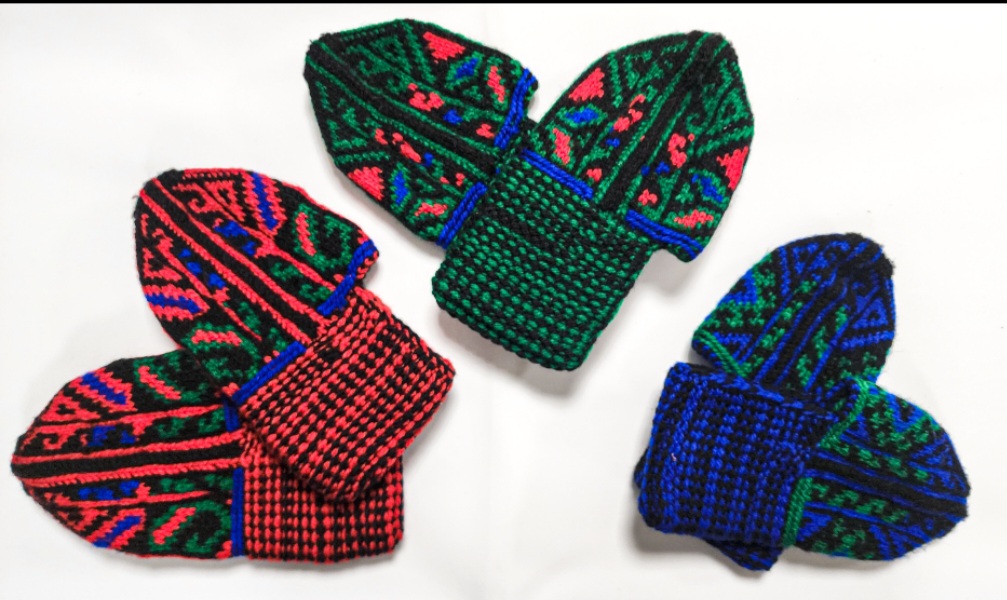
Weaving and knitting are widespread across Azerbaijan, one place where these closely linked age-old crafts are especially prevalent are the mountain villages.
The Khinalig people have mastered using the raw material they had in abundance—wool. The tradition of making carpets and rugs, gloves, socks and bags, woolen shawls, and other items is a way of utilizing wool and a necessity, as these items are used to keep the houses and bodies warm in harsh winters.
One of the most symbolic products of Khinalig people are thick and vibrantly patterned slipper socks called “jorab”, which are worn indoors to keep feet warm in winter and traditionally included in a bride’s dowry. For making jorab they use their own yarn from the wool from own sheep.
Jorabs – beautiful socks from woll. Each sock is beautiful and holds special meaning in the designs. Guba socks reflect elements of patterns characteristic of Guba carpets.
Analysis of sock ornamentation indicates that all elements were borrowed from Azerbaijani carpets. Ornamentation of socks is extremely rich and some of them can be considered a work of art due to the grace of the composition and pattern.
Knitted socks also represent the value of hospitality, which welcomes friends and strangers into homes. Upon entering a home, outside shoes are removed, and slippers are provided for the guests.
Commercialization of wool products was one of the main income-generating activities. The wool was a commodity exchanged for fruit, metal household items, and other goods that could not be found in Khinalig.
Now the sock weaving tradition continues in Khinalig. You can buy such colorful woolen socks or hand-knitted winter warmers from Khinalig as a souvenir. When you wear Khinalig socks, you will feel the warmth of Azerbaijani culture and hospitality.